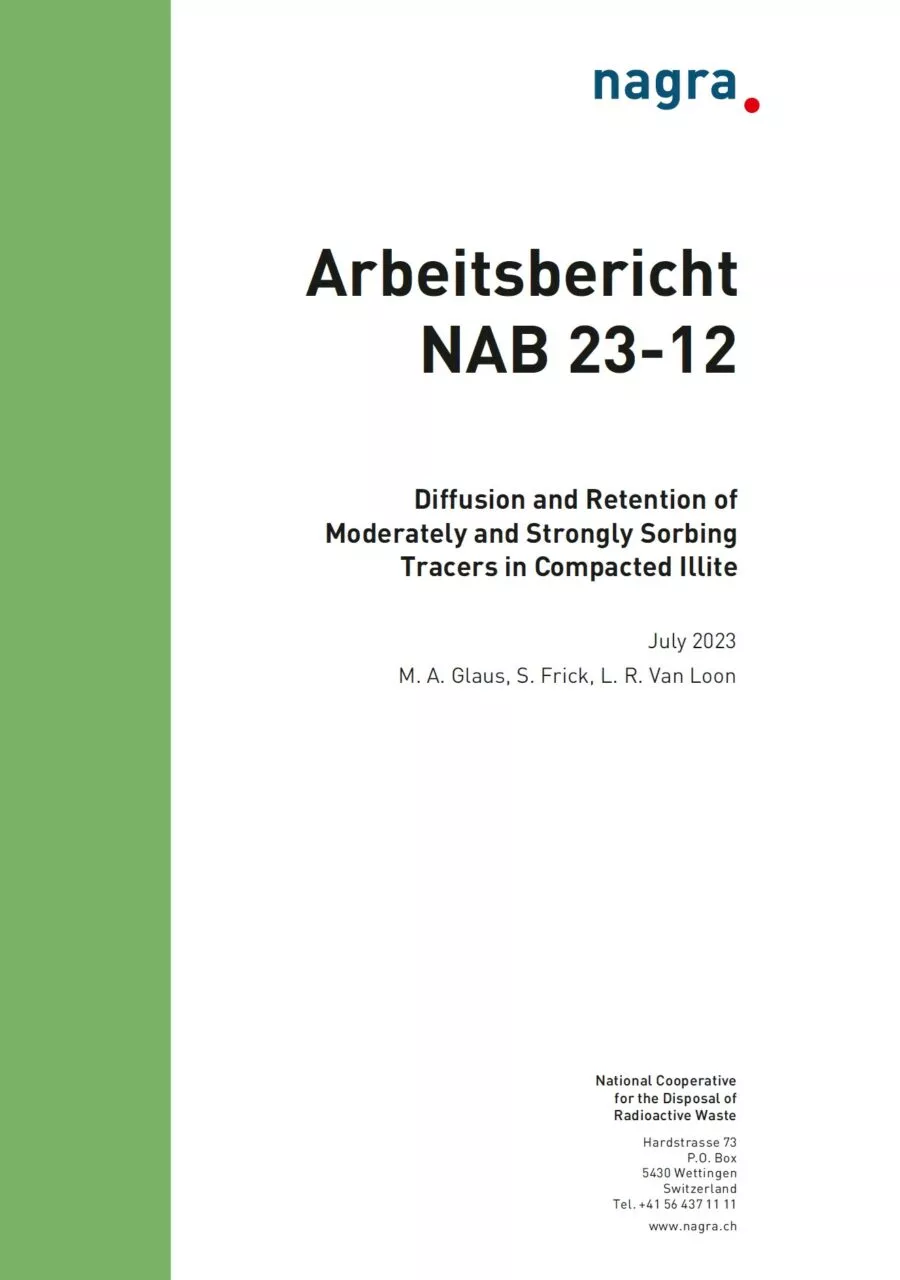
Arbeitsbericht NAB 23-12
Diffusion and Retention of Moderately and Strongly Sorbing Tracers in Compacted Illite
Abstract
The prediction of effective diffusion coefficients adequate for given pore water and clay surface properties, involves on the one hand knowledge of the prevailing geometry factors and on the other hand, knowledge on the speciation of the radioelement in the aqueous phase and at the clay surface, in particular the amounts of mobile surface species.
This report provides a number of experimental investigations in which the validity of the calculated speciation for the prediction of the diffusive properties of the radioelements selected is tested. In addition to parameters already tested in other studies, such as the ionic strength and pH, the present report focuses on various types of competitive actions for diffusion. The competition between 57Co2+, 55Fe, 54Mn2+ and 152Eu3+ tracers and Ca2+ or Mn2+, respectively, is investigated under a broad variety of conditions. It is shown that the effective diffusion coefficients of these radiotracers decrease with increasing concentrations of the competing cations. This can be explained by competition of the cations in the electrical double layer at the basal surfaces, which leads to a decrease of the concentrations of mobile radionuclide species and thus to a decrease of the effective diffusion coefficients. The sorption distribution ratios are influenced in an expected manner, corroborating thus the experience that the sorption properties measured in disperse systems are well applicable also in the compacted state of the illite.
The present findings are fully compatible with our current understanding of sorption competition effects and the knowledge on the different site preferences of different types of cations. The prediction of effective and apparent diffusion coefficients in the compilation of diffusion databases for site specific conditions of rock pore water will be broadly supported by the present data.
